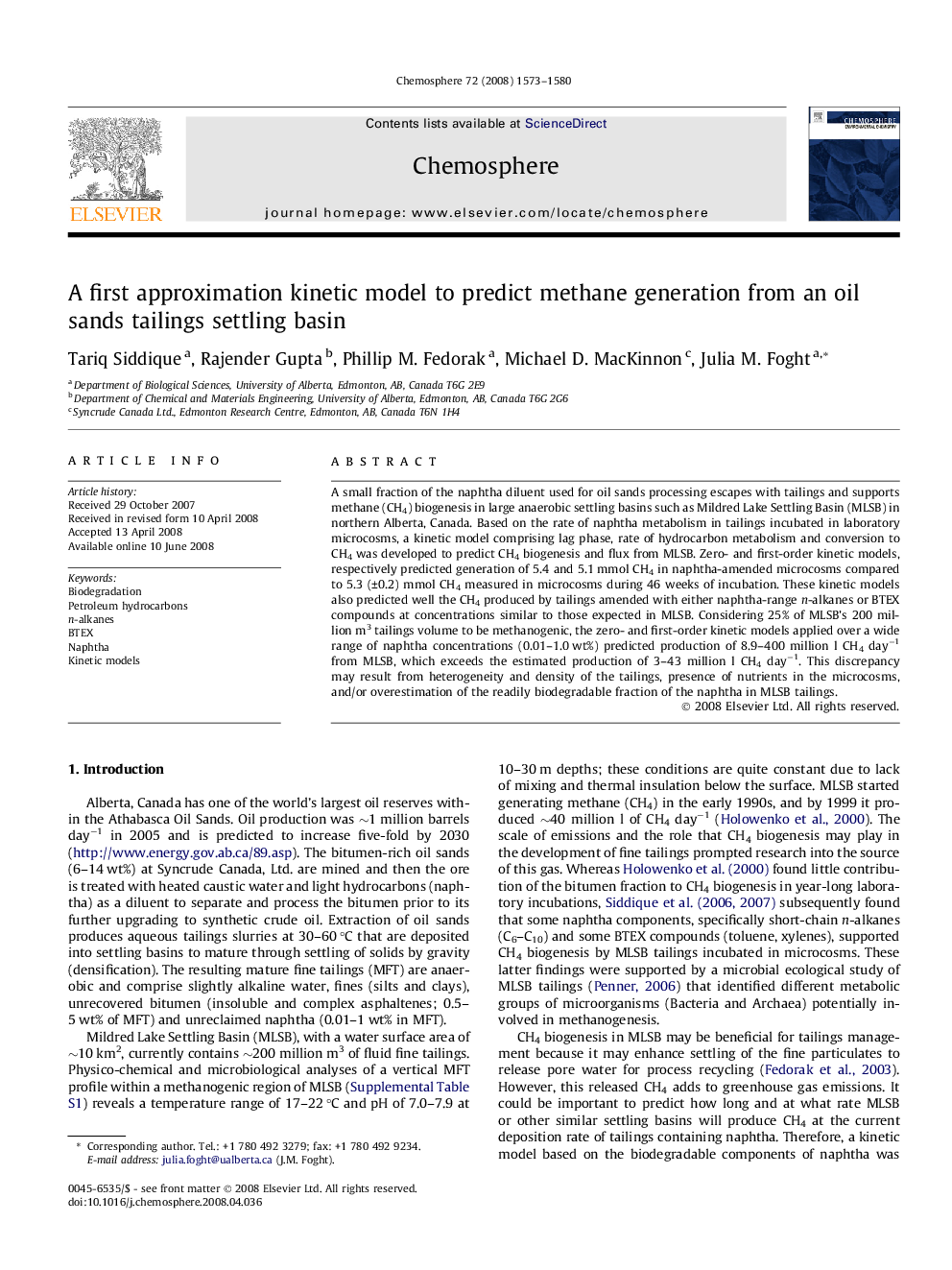| Article ID | Journal | Published Year | Pages | File Type |
|---|---|---|---|---|
| 4414045 | Chemosphere | 2008 | 8 Pages |
A small fraction of the naphtha diluent used for oil sands processing escapes with tailings and supports methane (CH4) biogenesis in large anaerobic settling basins such as Mildred Lake Settling Basin (MLSB) in northern Alberta, Canada. Based on the rate of naphtha metabolism in tailings incubated in laboratory microcosms, a kinetic model comprising lag phase, rate of hydrocarbon metabolism and conversion to CH4 was developed to predict CH4 biogenesis and flux from MLSB. Zero- and first-order kinetic models, respectively predicted generation of 5.4 and 5.1 mmol CH4 in naphtha-amended microcosms compared to 5.3 (±0.2) mmol CH4 measured in microcosms during 46 weeks of incubation. These kinetic models also predicted well the CH4 produced by tailings amended with either naphtha-range n-alkanes or BTEX compounds at concentrations similar to those expected in MLSB. Considering 25% of MLSB’s 200 million m3 tailings volume to be methanogenic, the zero- and first-order kinetic models applied over a wide range of naphtha concentrations (0.01–1.0 wt%) predicted production of 8.9–400 million l CH4 day−1 from MLSB, which exceeds the estimated production of 3–43 million l CH4 day−1. This discrepancy may result from heterogeneity and density of the tailings, presence of nutrients in the microcosms, and/or overestimation of the readily biodegradable fraction of the naphtha in MLSB tailings.
